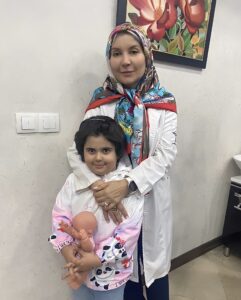

Dr. Seyedeh Soheila Arefi, Surgeon and Specialist in Obstetrics, Gynecology, and InfertilityBoard certified in Obstetrics and Gynecology from Tehran University of Medical Sciences, with fellowships in Infertility and Advanced Laparoscopy from London, and Hysteroscopy from Tehran University.Author of two books and over 60 scientific articles in national and international journals.Faculty member of Avicenna Research Institute.








All rights reserved for Banta Life Them.
samira malehmir